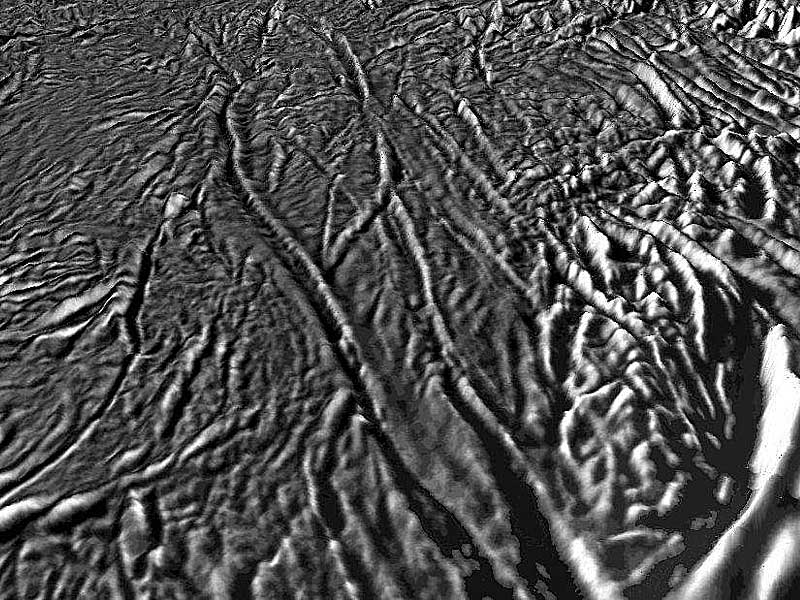Close Up of Enceladus Tiger Stripes

Explanation:
Could life exist beneath Enceladus?
A recent flyby of Saturn's icy moon has bolstered this fascinating idea.
Two years ago, images from the
robotic
Cassini spacecraft
orbiting
Saturn led astronomers to the undeniable
conclusion that Saturn's moon Enceladus was
spewing fountains
of gas and ice crystals through cracks in its surface dubbed
tiger stripes.
Last month, Cassini dove through some of these
plumes and
determined that they contained water vapor laced with small amounts of
methane as well as simple and
complex
organic molecules.
Surprisingly, the plumes of Enceladus appear similar in make-up to many
comets.
What's more, the temperature and density of the
plumes indicate they might have originated from a warmer source --
possibly a liquid source -- beneath the surface.
A liquid water sea containing organic molecules is a good place to look for life.
Pictured above
is a vertically exaggerated close-up of some long, venting tiger stripes.
The computer composite was generated from
images and shadows
taken during the
recent Cassini flyby.
Nine more flybys of
Enceladus by Cassini are planned.
Authors & editors:
Robert Nemiroff
(MTU) &
Jerry Bonnell
(USRA)
NASA Web Site Statements, Warnings,
and Disclaimers
NASA Official: Jay Norris.
Specific
rights apply.
A service of:
LHEA at
NASA /
GSFC
& Michigan Tech. U.

